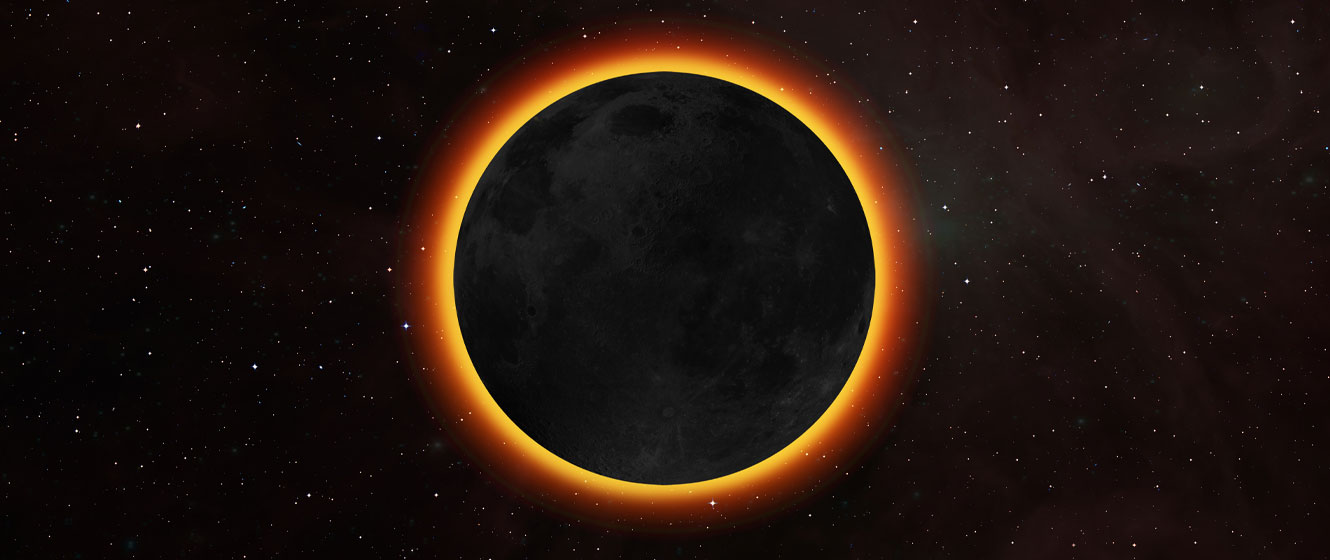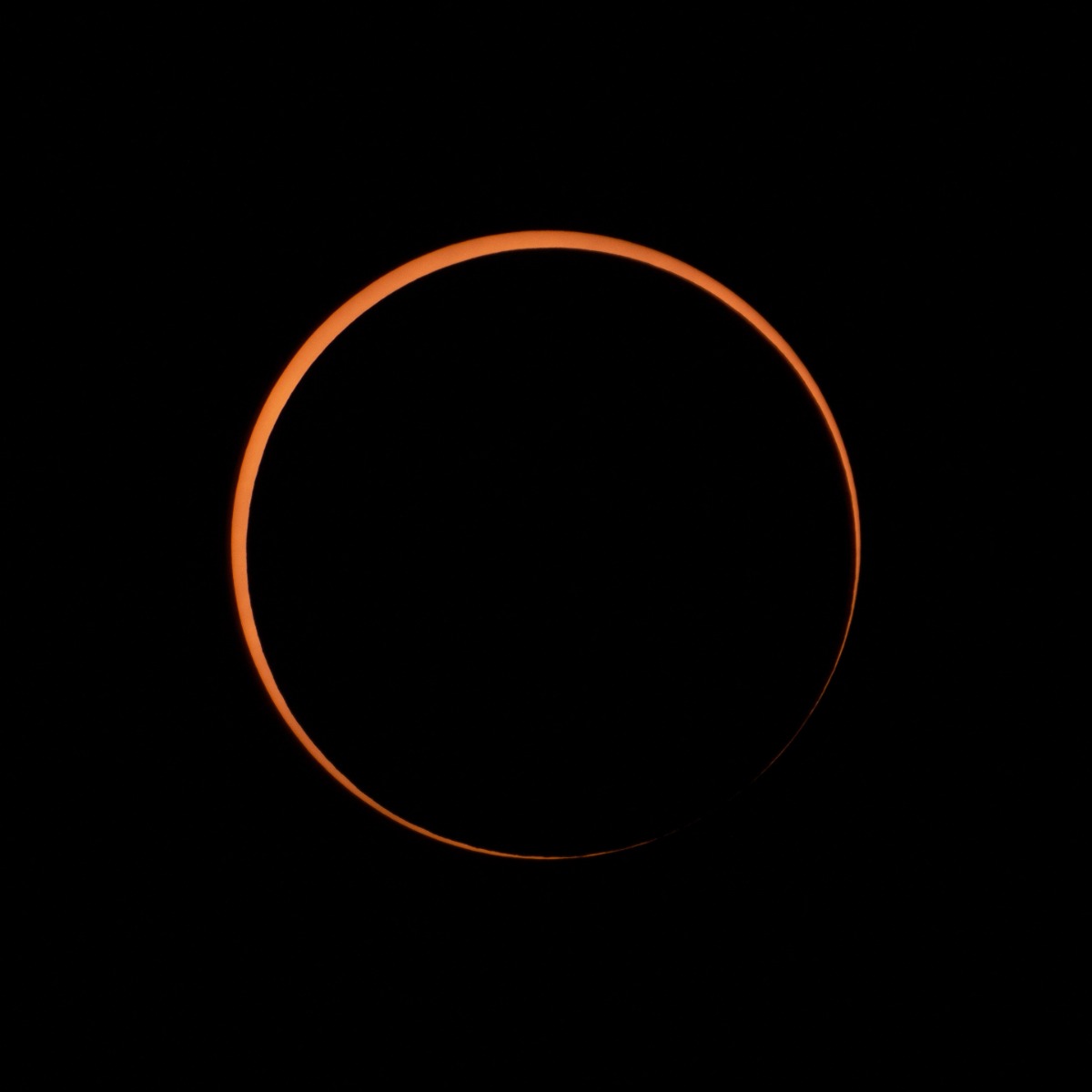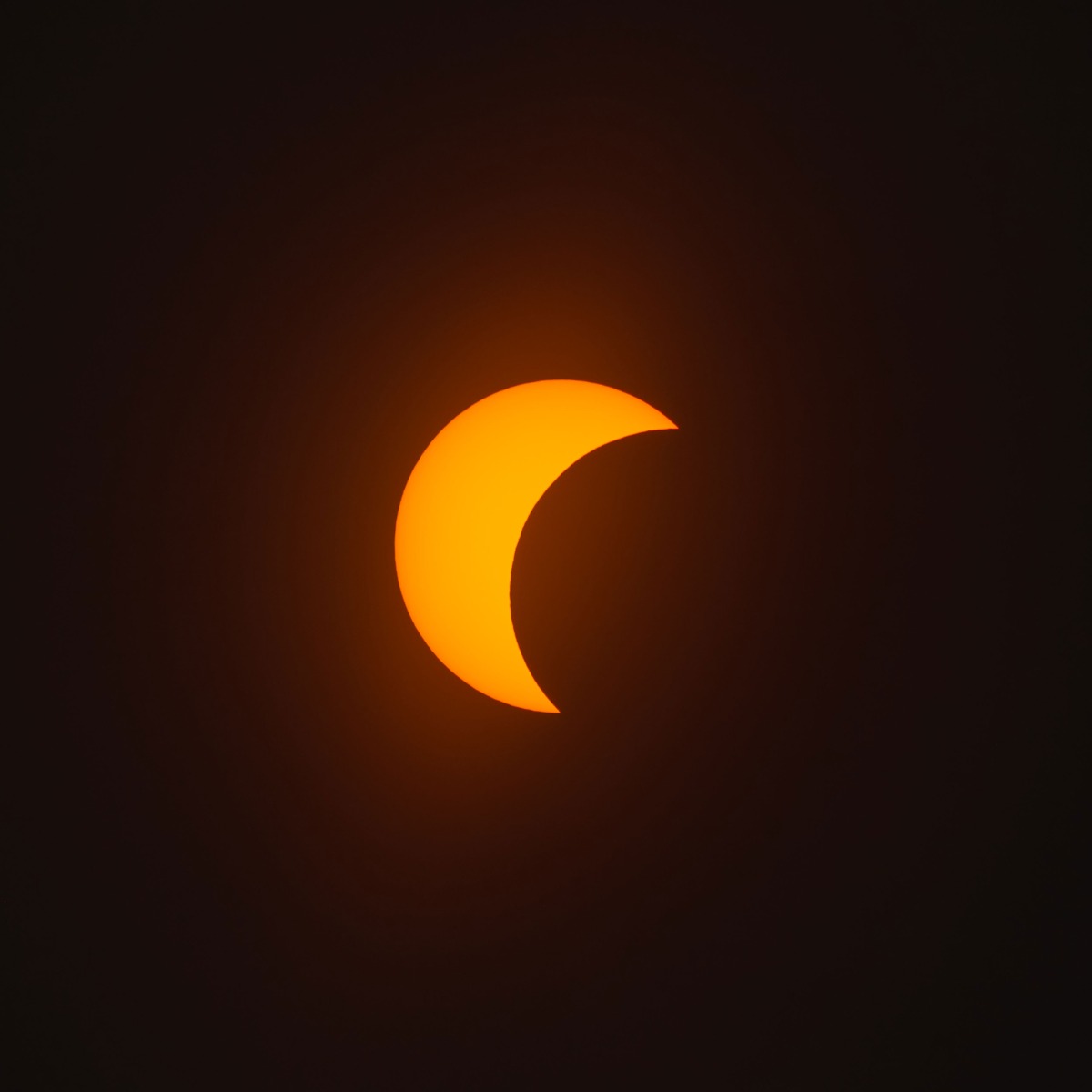
If there’s one natural phenomenon that everyone should witness at least once in their lifetime, it’s a total solar eclipse. Quite simply, there’s nothing else like it. The temperature drops, the sky goes dark, the stars and planets briefly shine and all that’s left of the Sun is a glowing, ethereal halo of white light.
Since the dawn of time, people across the world have been struck by awe, wonder, and fear as these apparently supernatural events occurred, but now we know what causes them and how to predict them. So what is a solar eclipse? Why don’t we see one every month? And what are the different types of eclipses you can see?
What is a Solar Eclipse?
Let’s start with the basics. A solar eclipse occurs at the new Moon, when the Moon is between the Earth and the Sun. If all three - Sun, Moon, and Earth - are in alignment, then the Moon will cast its shadow on the surface of the Earth. Anyone standing in the shadow will see a solar eclipse as the Moon moves between the Earth and the Sun.
(Conversely, a lunar eclipse occurs at full Moon, when the Moon is on the opposite side of the Earth and passes through the Earth’s shadow.)
Since the Moon’s shadow is relatively small, its path across the surface of the Earth is very narrow, and only a lucky few are able to witness the total eclipse. If you’re close to the path, you may see a partial eclipse (see further below), but how much of the Sun is hidden will depend upon how close you are to the Moon’s shadow.
If you’re wondering why the Moon is just the right size to neatly cover the Sun, it’s because they both appear the same size (roughly half a degree) in the sky. This is due to the fact that while the Sun is 400 times wider than the Moon, it is also 400 times further away.
If the Moon were the same distance as the Sun, it would appear 400 times smaller. (If you’re curious, that would give it an angular size of roughly 4.5 arcseconds, or about two-thirds that of Mercury at greatest elongation.)
Why Don’t We See a Solar Eclipse Every Month?
If you know a little about the phases of the Moon, you may know that a new Moon occurs roughly every 29 days, so why don’t we see a solar eclipse every month?
In short, it’s because both the Moon’s orbit and the Earth itself are tilted at an angle. Consequently, the Sun, Moon, and Earth are usually not in alignment, the Moon’s shadow misses the Earth completely, and no total solar eclipse occurs.
If the Sun, Earth, and Moon are nearly aligned, then observers on Earth may see a partial solar eclipse, when the Moon covers a portion of the Sun’s disc.
Solar eclipses occur at least twice a year, but the vast majority of these will be partial. On average, a total solar eclipse will only occur once every 18 months or so.

What Are the Different Types of Solar Eclipses?
You may have already heard of partial and total solar eclipses, but there are, in fact, four types of solar eclipses: partial, total, annular, and hybrid.
Partial Solar Eclipses
As we mentioned above, a partial solar eclipse occurs when only a portion of the Sun’s disc is obscured by the Moon. This happens under two circumstances; when the Moon’s shadow misses the Earth, or when there’s a total solar eclipse but the observer is not within the path of totality.
How much of the Sun is obscured really depends on your location on Earth, as it’s a matter of perspective. If you’re in a location that’s far from the Moon’s shadow, then you’ll only see a slightly partial eclipse, as your viewing angle will cause the Moon to only cover a small portion of the Sun’s surface.
If, on the other hand, you’re close to the Moon’s shadow, then your viewing angle will show the Moon covering the majority of the Sun’s surface.

Total Solar Eclipses
Again, as mentioned above, a total solar eclipse occurs when the Sun, Earth, and Moon are in perfect alignment and the Moon’s shadow moves across the surface of the Earth. Depending on the mechanics of the eclipse, totality - when the entire surface of the Sun is covered - can last anywhere between a few seconds and seven and a half minutes.
On average, totality will often last about two or three minutes, but it will vary, depending on the distance of the Moon, your location, and how close you are to the center of the Moon’s shadow.
Annular Solar Eclipses
It probably won’t come as any surprise to learn that the Moon is not always precisely the same distance from the Earth. On average, it’s nearly 239,000 miles away, but that distance could vary between 226,000 and 252,000 miles. This is due to the Moon’s orbit being slightly elliptical, rather than a perfect circle.
If the Moon is closer during an eclipse, then totality lasts longer as it takes longer for the entirety of the Moon’s disc to pass in front of the Sun. However, if the Moon is further away, it may be too small to cover the entire disc of the Sun.
In that situation, the Moon appears silhouetted against the Sun and we see a bright ring of sunlight instead. That’s an annular eclipse.

Hybrid Solar Eclipses
Hybrid eclipses are rare and only occur, on average, about once every 15 years. They’re known as hybrid eclipses because you could either see an annular solar eclipse, or a total solar eclipse, depending on where along the path of totality you are. This happens because the curve of the Earth and the angle of the Moon’s shadow results in the observer being slightly further away, so the Moon appears smaller. As a result, you’ll see an annular solar eclipse.
However, as the Moon passes between the Earth and the Sun, its shadow is cast directly onto the Earth (as opposed to being at a slight angle) and anyone in the shadow at that time will be closest to the Moon. The Moon’s disc appears larger to those observers and is able to cover the entire Sun, and they’ll witness a total solar eclipse.
As the Moon continues in its orbit and begins to move out of alignment with the Earth and Sun, its shadow lengthens again and the Moon is slightly further from the observers on the ground. Again, just as at the start of the eclipse, the Moon will appear a little smaller for anyone in its shadow, and observers will see an annular solar eclipse.
Regardless of the type of eclipse you can expect from your location, you can be sure of a unique experience quite unlike anything else. Partial, total, annular, or hybrid, you’re witnessing celestial mechanics at work as worlds align and day darkens to night. The ancients might have looked upon eclipses with fear, but today we can enjoy them with awe and wonder.

Learn More
Interested in learning more about solar and lunar eclipses? Not sure where to begin? Check out our Astronomy Hub!










